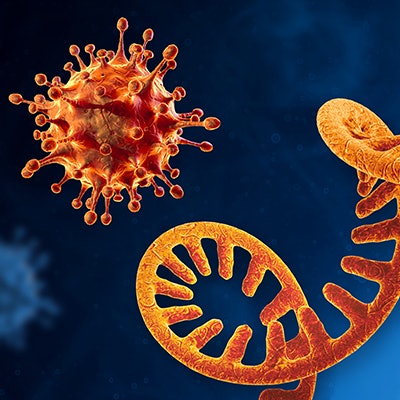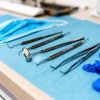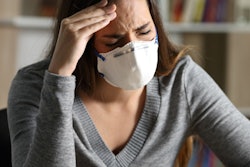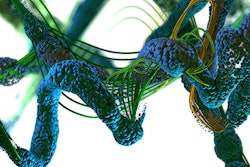
SARS-CoV-2 can infect cells in the mouth, raising the possibility that saliva plays a major role in transmission of the virus, according to a new study published on March 25 in Nature Medicine.
There may also be an association between SARS-CoV-2 in saliva and oral symptoms commonly found with COVID-19, such as loss of taste, the authors wrote.
The study "data show that the oral cavity is an important site for SARS-CoV-2 infection and implicate saliva as a potential route of SARS-CoV-2 transmission," wrote the group, led by Dr. Blake Warner, PhD, from the U.S. National Institute of Dental and Craniofacial Research and Dr. Kevin Byrd, PhD, from the ADA Science & Research Institute.
Though potential oral manifestations of SARS-CoV-2 infection have been reported, how the oral cavity is involved is poorly understood. Learning more about how the novel coronavirus is transmitted can help inform plans to reduce the spread of the virus.
The researchers hypothesized that salivary glands and barrier epithelial cells of the oral cavity and oropharynx can be infected by SARS-CoV-2 and contribute to the spread of the infection. They generated two human oral single-cell RNA sequencing (scRNA-seq) atlases to predict cell-specific susceptibilities to SARS-CoV-2 infection. They used autopsy and outpatient samples to test their theories.
RNA for two key viral-entry proteins -- the angiotensin converting enzyme 2 (ACE2) receptor and the transmembrane serine protease 2 (TMPRSS2) enzyme -- was found in specific cells of the salivary glands and tissues lining the oral cavity. RNA for both proteins was expressed in the same cells in a small number of salivary gland and gingival cells, indicating higher vulnerability to SARS-CoV-2 infection.
The researchers found SARS-CoV-2 RNA in approximately half of the salivary glands in samples from COVID-19 patients who had died. When studying those with mild or asymptomatic COVID-19, they also found that cells shed from the mouth into the saliva had SARS-CoV-2 RNA, along with RNA for ACE2 and TMPRSS2. In addition, saliva from asymptomatic COVID-19-positive individuals led to the infection of healthy cells grown in a dish.
The group also found a correlation between oral symptoms and saliva containing SARS-CoV-2. Among 27 people experiencing mild COVID-19 symptoms, those with virus detected in their saliva were more likely to report issues with smell and taste, suggesting oral infection may play a role in COVID-19 oral symptoms.
One limitation of the study was the testing approach. Due to the scRNA-seq approach, suprabasal epithelial cells were underrepresented compared to other epithelial cell subpopulations, the authors wrote.
More studies need to be conducted to better understand the routes of viral transmission among asymptomatic, presymptomatic, and symptomatic individuals, they noted.
"Asymptomatic transmission of SARS-CoV-2 remains the 'Achilles' Heel' of this pandemic, and, owing to the peripheral anatomical location and frequent exposure of oral tissues to the external environment, it remains possible that these tissues play a major role in the asymptomatic spread of SARS-CoV-2," the group wrote.




















